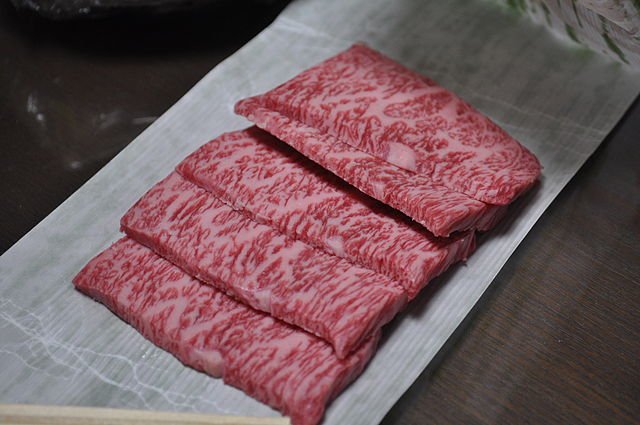With only about 2,200 heads of cattle bred specifically for it, of which only a few are harvested every month, olive wagyu is regarded as the rarest type of steak in the world.
The history of olive wagyu is closely tied to that of Shodoshima Island, in Japan’s Kagawa Prefecture. Also known as “Olive Island”, because of its microclimate, which is comparable to that of the Mediterranean, Shodoshima is the native home of Japan’s olive cultivation. It’s also a place where Wagyu cattle have been raised since the 8th century, mainly as animals of burden, cultivating rice paddies and hauling heavy loads thanks to their ample energy reserves. But until one local farmer came up with a way of incorporating Shodoshima’s main export into the cattle’s diet, Wagyu couldn’t stand the bitter taste of olives.
The creation of olive wagyu is generally attributed to Masaki Ishii, a farmer on Shodoshima Island, who, disheartened by the amounts of spent olives – aka known as “lees” – he had to throw away every year, decided to do something about it. Lees are basically pressed olives leftover from the oil-making process, and they are very rich in nutrients, so Masaki figured that there had to be a way to put them to good use.
As a Wagyu owner himself, the farmer first tried feeding the spent olives to his cattle, but that proved to be a very bad idea. The cows didn’t eat the unusual feed, as the unusual texture and bitter taste of the raw olives and were just not to their liking at all. But Masaki didn’t just abandon his plan. Instead, he started looking for ways of making the spent olives more palatable.
Through trial and error, Masaki Ishii found that by lightly toasting, drying, and pressing the spent olives to bring out the natural sugars in them, he could make them a lot tastier to cows. That’s because the toasting brought out the natural sugars in the olives. Now, the Wagyu couldn’t get enough of them.
But while Masaki had been successful in closing the waste loop, he didn’t realize he had also managed to revolutionize wagyu beef until a lot later. Supplementing the cattle’s diet with spent olives changed the flavor of the meat itself, and Japanese connaisseurs noticed that the moment they tasted it. Apparently, the olives’ richness intensified the umami flavor of the meat, making the succulent steak even more delicious.
It wasn’t just the taste that the olive diet of the cattle influenced, but the marbling of the meat as well. Wagyu marbling is already famous among steak connaisseurs the world over, but olive wagyu has even more profound marbling, which makes it even more buttery smooth.
There are those who claim that olive wagyu, because of the high oleic acid content of olives, widely considered to be one of the healthier sources of dietary fats, is healthier than normally reared wagyu, and much more so than regular beef.
Subscribe to our Youtube Channel: